OSTEO-B PLUS (Osteoporosis & Bone Healing Formula)
*** Please Login or Register with DC Nutrition to see Prices and Add To Cart. ***
Login | Create An Account / Register
Osteo-B Plus is a source of vitamins, minerals and other factors known to support bone growth and repair. It contains magnesium, calcium, boron, vitamin K, and magnesium. Use Osteo-B Plus with osteoporosis, bone trauma, menopause, and periodontal disease. The general dose is two tablets, three times a day.
The product also contains vitamin D, but I think the reason the product works is because it combines the three things that we know will support bone. Everybody says, ""It must be the calcium, magnesium, and vitamin D components."" That is not the entire story. It's the manganese, boron, and vitamin K. Medical research studies to substantiate this fact were completed in the Netherlands and in Belgium. These double blind, crossover studies revealed that these were the only three nutrients, by themselves, that would ameliorate bone loss.
Osteo-B Plus contains these three nutrients, as well as silica, calcium, magnesium, vitamin D and other synergistic nutrients. I feel Osteo-B Plus is the best osteoporosis formula available in the marketplace.
PRODUCT DESCRIPTION
OSTEO-B PLUS
**Three (3) tablets supply:
Calcium (citrate) 500 mg
Magnesium (oxide) 200 mg
Boron (calcium borogluconate) 3 mg
Zinc (gluconate) 5 mg
Copper (gluconate) 2 mg
Manganese (gluconate) 5 mg
Purified Chondroitin Sulfates (Bovine) 200 mg
Vitamin C (ascorbic acid) 120 mg
Vitamin B1 1.5 mg
Vitamin B2 1.7 mg
Vitamin B6 2 mg
Vitamin B12 (resin bound) 6 mcg
Niacinamide 20 mg
Pantothenic Acid 10 mg
Biotin 300 mcg
Folic Acid 400 mcg
Vitamin D3 200 I.U.
Vitamin K (phytonadione) 65 mcg
Sugarcane (Saccharum Officinarium) extract 30 mg (botanical source of silicon)
SUGGESTED USE: One (1) to three (3) tablets each day as a dietary supplement or as otherwise directed by a health care professional.
Contains: 90 Tablets
Product #: 1500
NDC: 55146-01500
ADDENDUM
OSTEOPOROSIS and BONE HEALING
Osteoporosis is a multifaceted disorder resulting in a reduction in bone mass, which can lead to fractures following minimal trauma. Contributing factors include more than just calcium intake levels. This may help explain the low incidence of osteoporosis in certain cultures that consume under500 mg of calcium per day. Invariably, these people consume more than adequate amounts of trace minerals. Unfortunately for American females, their dietary intake of trace minerals, important for bone health and metabolism, averages less than 80% of the established RDA's. These trace minerals include calcium, magnesium, zinc, copper, manganese, and boron. To make matters worse, a typical American diet is too rich in phosphorus, aluminum and other heavy metals that are known to antagonize actions of essential minerals. Thus, it makes more sense to supply all the important elements needed for normal bone turnover and repair, rather than adding excessive amounts of calcium only. Osteo-B-Plus, from Biotics Research Corp., has taken these and other factors into consideration. The result is a highly bioavailable, comprehensive supplement for bone health.
Osteo-B-Plus contains:
Calcium: Supplementation may help prevent bone loss in calcium-deficient people. Those having demineralized bones may have difficulty absorbing calcium due to low stomach acid production (hypochlorhydria or achlorhydria). Some forms of calcium are poorly absorbed. Osteo-B Plus supplies calcium as calcium citrate, which is the most absorbable form of calcium, especially for those with low stomach acid.
Magnesium: In addition to being a co-factor for key enzymes in bone, including alkaline phosphatase employed in remodeling, magnesium is also a cofactor in enzymes involved in converting vitamin D to its hormone form. Abnormal mineralization has been correlated with osteoporotic women found to be low in magnesium. Magnesium supplementation along with calcium may increase bone mineralization.
Boron: Boron affects the actions of parathormone, estrogen and cholecalciferol. A combined deficiency of magnesium and boron causes detrimental changes in bone in animals. In human subjects, boron deprivation lowered plasma calcitonin levels, increased total plasma levels and increased excretion of calcium. Normalization of steroidal hormone levels, which is closely related to bone mineralization, was observed in postmenopausal women supplemented with 3 mg of boron daily.
Manganese: Deficiency can lead to bone malformation and thinning. Manganese is required for the synthesis of connective tissue glycosaminoglycans (chondroitin sulfates) that form the matrix upon which mineral deposition occurs. Osteoporotic women were found to have only 25% of the manganese levels observed in control groups.
Copper: Deficiency may lead to abnormal bone deposition. Collagen is laid down prior to mineralization in order to establish a protein matrix for mineralization. Copper is a cofactor for lysyl oxidase, the enzyme that forms cross-links between collagen in connective tissue. The typical diet supplies as little as 50% of the recommended daily intake of copper.
Zinc: Low levels of serum zinc and bone zinc were observed in osteoporotic patients. Zinc supports bone formation by enhancing the action of vitamin D, and is a cofactor for alkaline phoshatase. Typical diets contain less than the desired amount of zinc.
Silicon: Silicon's mode of action is related to the formation of bone, possibly by the following two mechanisms: 1) by facilitating the formation of glycosaminoglycan and collagen components of the bone matrix through its role as a constituent of the enzyme proly1hydroxylase, 2) by a structural role for silicon as a component of glycosaminoglycans and glycosamino-protein complexes in which it is believed to occur as silanolate in mucopolysaccharides, linking different polysaccharides in the same polysaccharide chain, or linking acid mucopolysaccharides to protein. The postulated structures of such links have still to be identified.
Silicon can be detected in small areas of ossifying bone during the early stages of mineralization. The silicon content of young osteoid tissue increases markedly, together with that of calcium, but at more advanced stages of bone formation, when calcification sets in, the silicon content decreases again to trace levels. The element is located within the mitochondria of the osteoblast.
Vitamin D: Vitamin D is the primary factor regulating calcium absorption by the intestine. Administration of the hormone derived from vitamin D, cholecalciferol, significantly decreased the rate of bone loss and increased calcium uptake. Low levels of vitamin D are common in elderly women. Deficiencies of vitamin D can lead to calcium deficiencies, leading to soft bones (osteomalacia).
Vitamin K: The synthesis of osteocalcin, the bone protein that attracts calcium to bone tissue, requires vitamin K as a cofactor. Administration of vitamin K to individuals with osteoporosis reduced urinary excretion of calcium by 18-50%. Factors limiting vitamin K uptake include long-term usage of antibiotics, vitamin K antagonists such as warfarin, and malabsorption of fat and fat-soluble vitamins due to maldigestion.
B complex vitamins: B vitamins function as coenzymes in metabolic pathways that provide energy and building blocks from foods. Shortages impair healing and repair by connective tissues, including bone turnover. B complex vitamins work as a team, i.e., all should be present in appropriated amounts for optimal functioning. For example, elevated blood homocysteine is linked to osteoporosis; homocysteine interferes with collagen cross-linking. Folate and vitamin B6 promote the conversion of homocysteine to simple amino acids. Vitamin B6 also participates in collagen cross-linking.
Vitamin C: Enzymes that form hydroxyproline and hydroxylysine (proline and lysine oxidases) require vitamin C. These hydroxyamino acids form cross-links with collagen and elastin in mature connective tissue and matrix. Twenty percent of elderly women were found to be deficient in vitamin C, even though they consumed RDI amounts (60 mg) daily.
Purified chondroitin sulfates: Chondroitin sulfates represent glycosaminoglycans (GAG), polysaccharides found in connective tissue such as cartilage. Low levels of chondroitin sulfates occur in bone where they initiate bone formation. Preformed GAG can stimulate chondroitin sulfate synthesis (14). Osteo-B Plus supplies highly purified chondroitin sulfates, up to 90% of which can be readily absorbed.
CAUTIONARY NOTE
Increased phosphorus intake along with low calcium intake may contribute to the onset of osteoporosis. Increased consumption of phosphorus over dietary levels is not desirable for osteoporotics because:
1. epidemiological studies found that elevated phosphorus intake is correlated with osteoporosis;
2. increased dietary phosphorus inhibits absorption of calcium, magnesium, zinc, manganese and copper by forming insoluble salts; and
3. studies indicate that treatment of osteoporosis may be difficult when dietary calcium: phosphorus ratios are greater than 1:1.25.
Another note is the documentation of heavy metal contamination in calcium products used by osteoporotics. Some Dolomite (mineral hydroxyapatite) and certain bone meal products have been shown to contain levels of cadmium and aluminum. Amounts of pure mineral compounds do not pose a risk of accidental heavy metal accumulation. OsteoB-Plus contains known amounts of pure minerals; thus assuring patients that no risk of heavy metal ingestion is present.
CONCLUSION
A shortage of a number of various nutrients may contribute to the development of osteoporosis. The proper nutritional approach should not be to provide a single mineral, such as calcium, or even a common source of calcium and other minerals, such as hydroxyapatite, Rather it should involve the contributing support of a full spectrum of relevant nutrients.
Osteo-B-Plus is formulated with bioavailable forms of important minerals along with key synergistic factors such as vitamin C and purified chondroitin sulfates. The inclusion of judicious amounts of B complex vitamins with vitamins D and K (emulsified for improved bioavailability) which play important roles in bone health, makes Osteo-B-Plus the most complete product available for providing nutritional support for bone health.

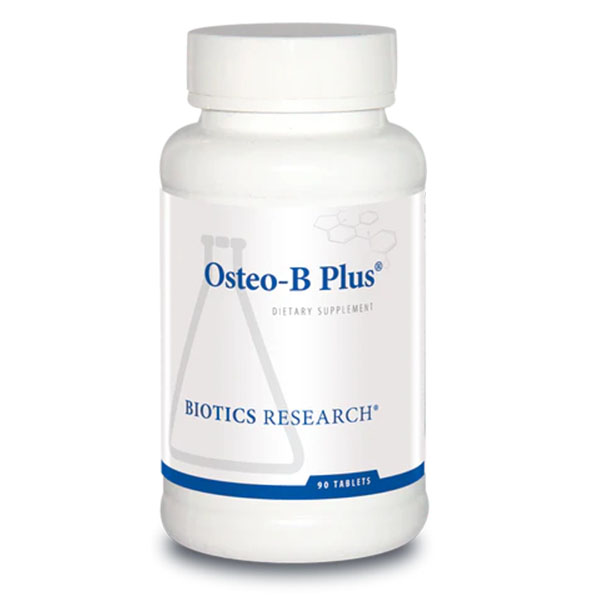
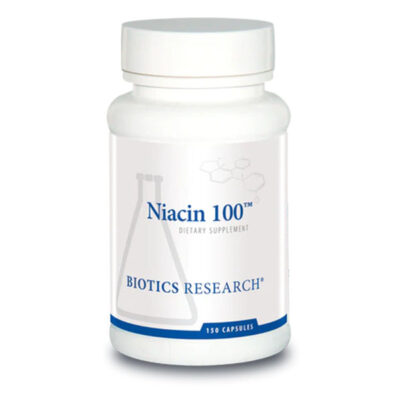
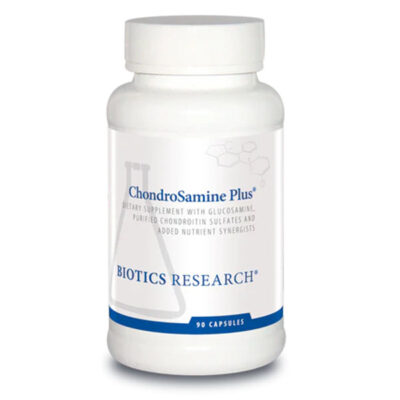
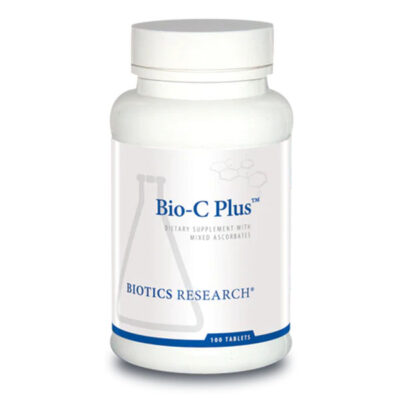
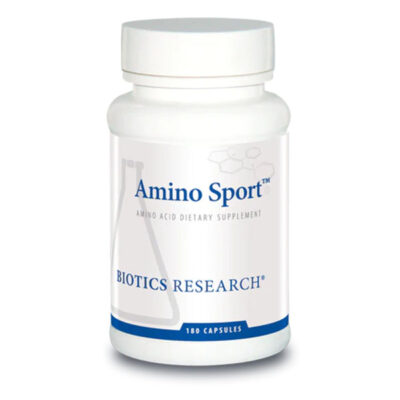
Reviews
There are no reviews yet.